ALMA image of Jupiter’s moon Europa. ALMA was able to map out thermal variations on its surface. Hubble image of Jupiter in the background.
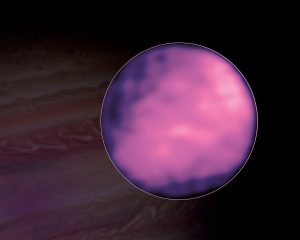
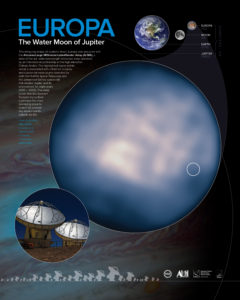
Europa, The Water Moon of Jupiter Poster
Downloadable poster of an ALMA observation of Europa. This intriguing image of Jupiter’s moon, Europa, was acquired with the Atacama Large Millimeter/submillimeter Array (ALMA), a state-of-the-art, radio-wavelength telescope array operated by an international partnership in the high elevation Chilean Andes. The highlighted region (white circle) is associated with a thermal anomaly and a potential water plume detected by both the Hubble Space Telescope and the unmanned Galileo spacecraft that studied Jupiter and its environment for eight years (1995-2003). The deep ocean that lies beneath Europa’s icy surface is perhaps the most promising place to search for present-day environments suitable for life.

Orphan GRB Discovered with VLASS
Series of radio images of FIRST J1419+3940 from 1993 to 2017 show its slow fade. Astronomers comparing data from an ongoing major survey of the sky using the National Science Foundation’s Karl G. Jansky Very Large Array (VLA) to data from earlier surveys likely have made the first discovery of the afterglow of a powerful gamma ray burst that produced no gamma rays detectable at Earth. The unprecedented discovery of this “orphan” gamma ray burst (GRB) offers key clues to understanding the aftermath of these highly energetic events.
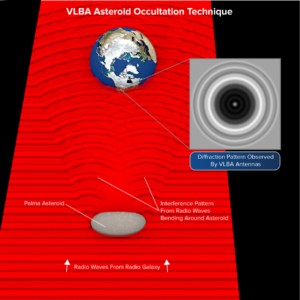
VLBA Sees Diffraction Patterns Caused by Asteroid
Radio waves from a distant galaxy were blocked from view by an asteroid in our Solar System. However, in a process called diffraction, waves bent around the asteroid and interacted to form a pattern of bright and dark circles. Astronomers analyzed this pattern to learn new details about the asteroid’s. size, shape, and orbit.
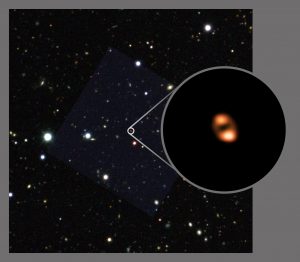
ALMA Observes Most Distant Galactic Outflow
ALMA, aided by a gravitational lens, imaged the outflow, or “wind,” from a galaxy seen when the universe was only one billion years old. The ALMA image (circle call out) shows the location of hydroxyl (OH) molecules. These molecules trace the location of star-forming gas as it is fleeing the galaxy, driven by either supernovas or a black-hole powered “wind.” The background star field (Blanco Telescope Dark Energy Survey) shows the location of the galaxy. The circular, double-lobe shape of the distant galaxy is due to the distortion caused by the cosmic magnifying effect of an intervening galaxy.
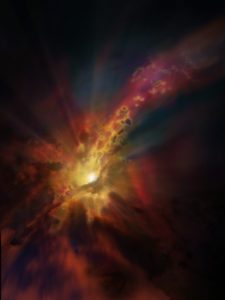
Outflows in Star-Forming Galaxies
Artist impression of an outflow of molecular gas from an active star-forming galaxy.

